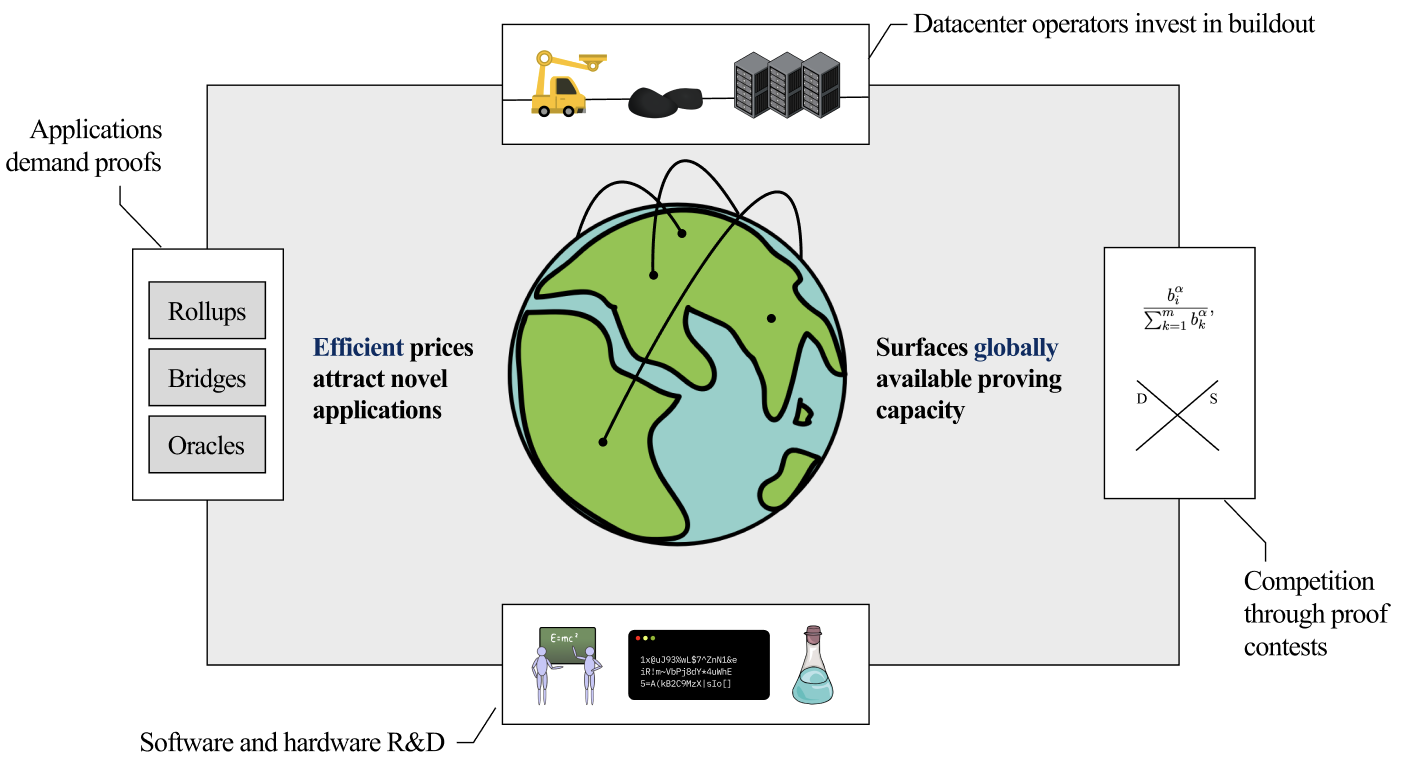Market Structure
The network coordinates the ecosystem of users, hardware teams, and infrastructure operators with cryptoeconomic incentives and induces a market structure where specialized participants can compete to provide the most efficient proving infrastructure for any application. Permissionless participation in the protocol catalyzes a global-scale infrastructure buildout that drives down the cost and latency of zero-knowledge proof generation for all.

There are two primary participants in the network: requesters, which are applications that demand ZK proving, and provers, who provide proving capacity and infrastructure. The network incentivizes global scale competition for developing increasingly efficient proving infrastructure. Tight integration with SP1 development and the network also ensures that technological and algorithmic advances in proving can quickly accrue to users.
Efficient Pricing Accelerates ZK Adoption
Without the aggregation of supply and demand, it is likely that the market for proving degenerates into applications and provers making bespoke agreements or applications setting up in-house infrastructure. Over the long run, application teams may not be well-positioned to run their own proving infrastructure due to the specialized operational and technical skills involved. Over-the-counter deals are not efficient and lead to frictions in the market. A transparent market with a unified protocol for pricing proofs provided by an aggregated supply chain reduces integration time, development cost, and generates efficient prices.
This means that the network can accelerate ZK adoption timelines for rollups, base layer blockchains like Ethereum, and other verifiable applications.
Global-Scale Competition Enables Price Discovery
Efficient pricing is enabled by the global, permissionless nature of the network. Because provers can join the network from anywhere in the world, the network can surface price signals from competitive datacenters and home provers. Often, individuals with home GPUs and hardware have far smaller capital costs due to spare capacity and lower operational costs due to cheap electricity than larger operators. The emergence of accelerated hardware for ZK proving, such as FPGAs and ASICs, will further improve prices for users.
Tight Integration with SP1 Development
The network's buildout is tightly integrated with proof system advances and the performance engineering of the SP1 zkVM. As proof system advances are released (for example, the development of a novel proof system), the network can quickly integrate them into the prover infrastructure.
More details about the market structure are available in the whitepaper.